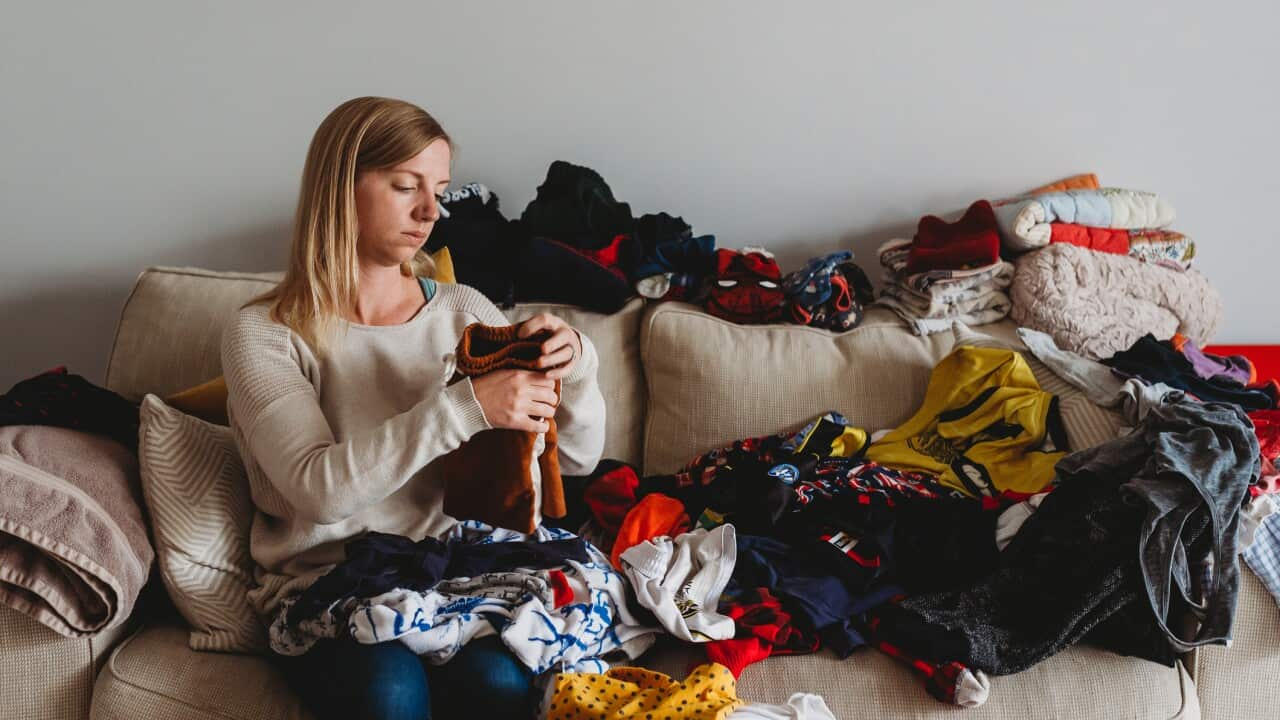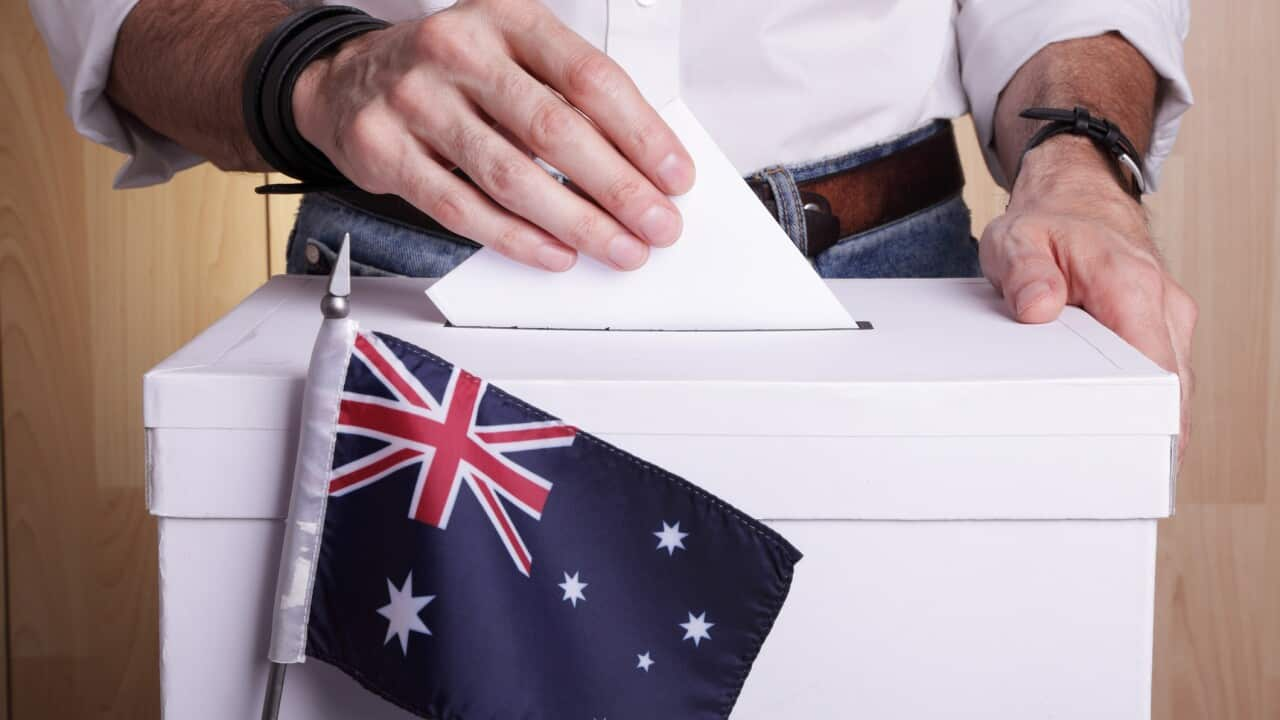Key Points
- In Australia, you can get rid of unwanted electronic items in designated recycling and e-waste collection points, for free.
- Lithium-ion batteries require different handling than the conventional ones.
- Services and drop-off points in your area to dispose of your old TV, computer, mobile phone, or other electronic device can be found at recyclingnearyou.com.au
The latest shows that Australia produced 531,000 tonnes of e-waste in the period 2020-2021.
“That means the average Australian produced in excess of 20 kilos per capita, far in excess of the global average of around seven kilos per capita,” Rebecca Gilling, CEO of , explains.
“About 54 per cent of that was sent for recycling and of that, around 35 per cent of those materials were actually recovered.”
Batteries are some of the most notorious e-waste items for their impact when placed in regular kerbside bins.
It is estimated that 90 per cent of Australia’s used batteries end up in landfill, leaking toxic materials into our soil and waterways.

When batteries are compressed and crushed in waste collection trucks and facilities, they can spark fires putting lives and the environment at risk. Credit: PhotoAlto/Milena Boniek/Getty Images
State and territory authorities have partnered with , a national government-backed scheme, with established drop-off points for used household batteries at community recycling centres and major retail outlets.
Even when disposing of dead batteries in a designated location, there is one simple safety measure you should take to avoid the risk of a fire being sparked.
We've seen evidence recently of a number of fires that have happened at recycling centres.Rebecca Gilling, CEO of Planet Ark
“So, we encourage people to put a bit of sticky tape over the terminals [the two ends marked with + and -], which will help to avoid them sparking with one another and causing fires,” Ms Gilling explains.
There are some exceptions to batteries eligible for the B-cycle recycling program, including lithium batteries which are commonly known for their use in electric bikes and scooters.
But as Distinguished Professor at RMIT University’s School of Science, Tianyi Ma, explains, lithium-ion batteries are used in many more daily life devices than we may imagine.
“From small ones to large ones. Portable electronics like smartphones, laptops, tablets and digital cameras, larger ones like electric vehicles, cars, motorcycles, and even larger ones such as for the grid energy storage in solar farms.”

Lithium-ion batteries are also found in power banks and toys and come in different shapes and sizes. If a battery has “Li” or “Lithium” printed on it, you can safely assume it is a lithium-ion battery. Source: Moment RF / Kypros/Getty Images
When damaged they can produce violent bursting of battery cells, release of toxic, flammable and explosive gases, and an intense fire that can be difficult to extinguish.
To avoid risks, take recommended precautions.
“First of all, store the lithium-ion battery in a cool, dry place and in a non-conductive container to prevent the short circuit of the battery,” Prof Ma advises.
“Many electronic stores and local waste management services offer batteries recycling services,” he adds.
When a lithium battery can be safely removed from the product by hand, the terminals should be taped with a non-conductive tape like clear sticky tape before sent for recycling to a designated site.
Prof Ma emphasises that safety is paramount when dealing with a damaged battery.
Across Australia, there are several product stewardship schemes for recycling electronic devices.
Under these schemes, manufacturers and importers of such products are required to finance their recycling efforts.

Did you know that e-scooters and bikes run with lithium-ion batteries? These, or in fact any battery, should never go in your household waste or recycling bins. Credit: Solskin/Getty Images
“It simply involves people dropping off those used televisions and computers and computer parts, accessories, usually at their local council resource recovery centre.
“Virtually all council areas have the facilities for residents to drop off those pieces of equipment.”
“And people can rest assured that as part of the National Television and Computer recycling Scheme, it is guaranteed that their privacy will be protected by the removal of all data from those items before they are either sent off for reuse, repair or recycling.”
However, it's important to remember that not all drop-off points are part of the scheme, so fees may be charged at some locations. it's best to check with your local council.

The Australian government runs a recycling program free to consumers for televisions and computers, including printers, computer parts and peripherals Source: Moment RF / Schon/Getty Images
Louise Hyland is the CEO of the Australian Mobile Telecommunications Association, the peak body running the industry-led recycling program.
“We encourage people to transfer their data to the new device and then wipe the data from the old phone before recycling. That just means that you don't lose your data.
“But even if you don't, once people drop off their phones […] the data is destroyed, the whole mobile phone is destroyed.”
Phone accessories and related devices are also accepted for recycling under the program, which offers drop-off and postal options at no cost.
“We accept all brands and types of mobile phones, plus chargers, accessories, modems, wearables and smart home devices,” Ms Hyland says.
“It's completely free to recycle a phone through mobile muster, either through one of our 3000 collection sites across the country […] or you can request a free prepaid post bag option.
Mobile phone batteries are also recycled through Mobile Muster if they remain within the device.Otherwise, loose batteries should be sent for recycling through the battery-specific B-cycle program.
For any electronic device and other materials or household items no longer in use, you can find the appropriate recycling option and your nearest drop-off location visiting
“People can go there, just put in their postcode and select the material or the item from the drop-down list and they will find all the drop off locations in their local area,” Ms Gilling explains.
“It's a terrific resource not just for e-waste, but for all other types of materials that they might want to either find recycling solutions for or even reuse solutions.”

Recycled e-waste can get a new life, for example in road base and construction materials or new batteries, while valuable metals are recovered from dismantled devices. Credit: Mindful Media/Getty Images
What to do if an electronic device or battery catches fire
If the device or battery starts to smoke or emit flames:
- Evacuate the area and close doors if safe to do so to slow the spread of fire ensuring no one goes back inside the building for any reason. The vented battery gases, vapour and smoke are highly toxic and flammable and must not be inhaled.
- Call Triple Zero (000) and wait in a safe location for firefighters to arrive.
- If anyone has been exposed to spilled electrolyte, flying debris, smoke or vapours, or flames, seek urgent medical assistance.








